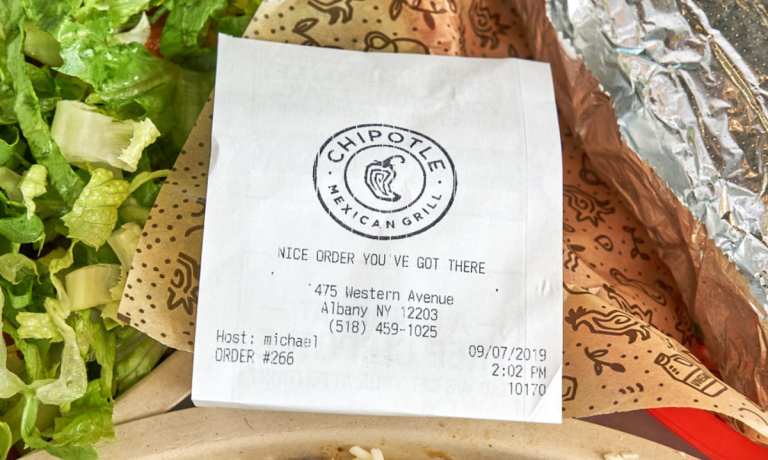
In its final quarter of 2020, Chipotle‘s digital delivery orders accounted for about 25 percent of its total sales. “To help improve the economics on this premium access point, we have implemented several delivery menu price differentials, with a weighted average fee right around 13 percent,” said CFO Jack Hartung on a call with analysts.
The increase may help the chain cover the high fees associated with using third-party delivery services, but at what point will consumers be unwilling to pay the added cost?
After the initial COVID-19 lockdown, consumers reported that they expected to pay $5.96 more for delivery from a third-party service than they would for in-store pickup, reported Food on Demand. This leaves Chipotle with a fair amount of wiggle room — consumers would have to place an order that would amount to $45.85 in-store to reach that $5.96 price increase they expect to pay. Given that Chipotle meals generally cost about $6.50-$7.50, according to Fast Food Menu Prices, consumers can easily order for their whole family without approaching the markup they expect to pay for third-party delivery services (even if they add guacamole).
Chipotle is not alone in this. In fact, the 13 percent hike is on the lower side of average: Analysts at Gordon Haskett Research Advisors calculated in July that, across 25 different quick-service restaurant (QSR) chains, delivery prices were 15.3 percent higher than pick-up prices, reported Webdiner. Chick-fil-A, which had the most dramatic delivery price increase, charged a full 30 percent more for delivery than for pickup, while Starbucks and McDonald’s each charged about 20 percent more. In fact, their analysis of Chipotle found that even their 13 percent price increase would not be enough to cover the cost of third-party delivery fees.
Fees for third-party delivery services can be shockingly steep, especially in areas where they remain uncapped. “A lot of times, these companies take 30 percent from restaurants that often can only afford 10 percent,” Samir Mogannam, owner of Beit Rima in San Francisco, told Food & Wine. Reem Assil, owner of Oakland restaurant Reem’s, agreed: “It’s highway robbery.” As Restaurant Business points out, these fees were manageable when delivery was just a supplement to the restaurant’s main business — but during the pandemic, when delivery makes up a large portion of total sales, it has become untenable.
The question of how to negotiate the cost of delivery between consumers, restaurants and third-party services has been more relevant in the past year than ever before. As discussed in this month’s QR Code Tracker, restaurant profits declined by double-digit percentages between April and August 2020 in light of the unprecedented challenges. Restaurants were forced to all but rely on takeout and delivery services, and outdoor patios and socially distanced dining room options have been curtailed by winter weather and surges in COVID-19 cases over the past several months. As consumers look to stay safe indoors, the need for a sustainable delivery business becomes even more relevant than it was in the spring and summer.
In last month’s Order to Eat Tracker, PYMNTS researchers highlighted the National Restaurant Association’s recently issued Public Policy Principles for Third-Party Delivery, a collaborative effort spearheaded by the Washington, D.C.-based trade group, which represents more than 380,000 U.S. restaurants and delivery providers. The new guidelines recommend best practices for delivery companies and future public policy initiatives. It also features a set of outlined principles, including that restaurants have a right to know and decide when and if their food is delivered and should be given transparency regarding third-party delivery fees. It also states that customers should be able to expect the same degree of food safety from delivery that they would receive at dine-in establishments.
Meanwhile, New York recently announced that it would support the state’s more than 50,000 food and drink establishments by moving into the second phase of a digital initiative. The state has partnered with commission-free online ordering system provider Ritual, which typically provides its service for $69 per month, to offer the latter’s platform for free through April. Among other benefits, restaurants that join the service through New York’s initiative are spared fees for credit card processing, delivery, pickup, subscription and setup.